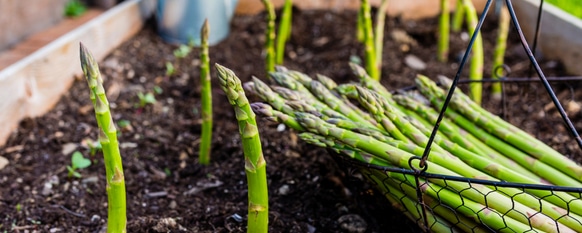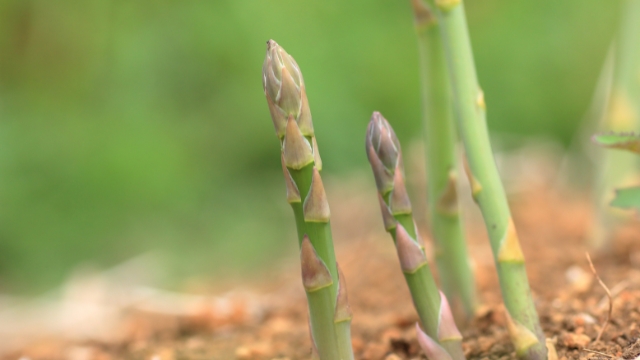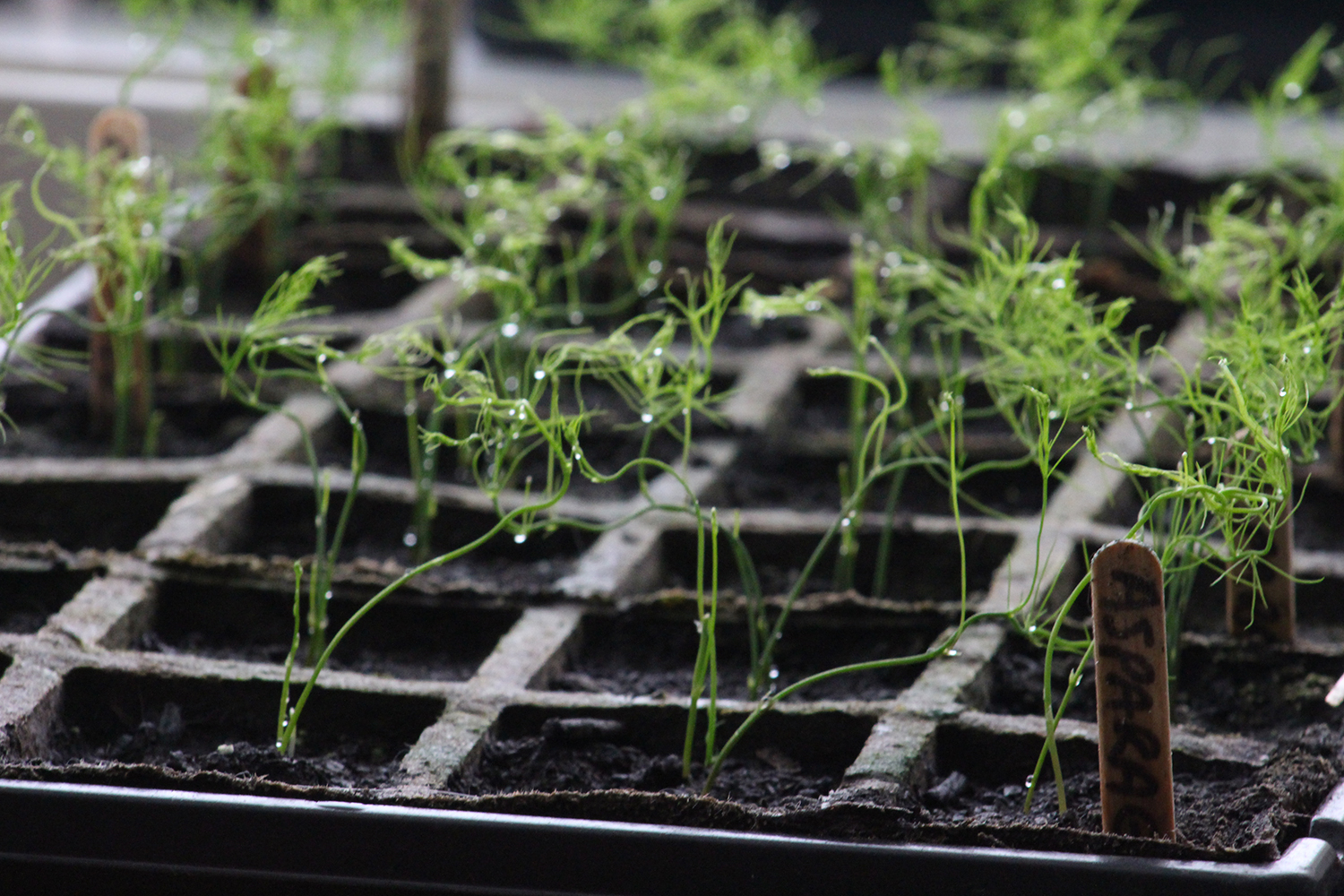Why Autumn is the Ideal Time to Sow Asparagus Seeds
As the summer months come to a close, many gardeners begin to prepare for the next growing season. One of the most beneficial times to plant asparagus seeds is in the fall, typically around late August or early September. Planting asparagus seeds in the fall offers several advantages, including cooler temperatures, reduced pests and diseases, and improved soil conditions.
During the fall season, the air temperature is generally cooler, which allows for optimal seed germination and growth. Asparagus seeds planted in the fall also have a lower risk of being damaged by extreme heat, drought, or intense sunlight. Additionally, the fall season typically experiences fewer pests and diseases, reducing the need for pesticides and other chemicals.
Another significant benefit of planting asparagus seeds in the fall is the improved soil conditions. The soil has had time to recover from the intense summer heat, and the cooler temperatures allow for better water retention and nutrient uptake. This results in healthier and more robust seedlings, which are better equipped to withstand the challenges of the winter months.
Furthermore, planting asparagus seeds in the fall allows for a head start on the growing season. By the time spring arrives, the seedlings will have had time to establish a strong root system, which enables them to grow more rapidly and produce a bountiful harvest. With proper care and maintenance, asparagus seedlings planted in the fall can produce a delicious and nutritious crop for years to come.
Overall, planting asparagus seeds in the fall is an excellent strategy for gardeners looking to establish a healthy and productive asparagus bed. By taking advantage of the cooler temperatures, reduced pests and diseases, and improved soil conditions, gardeners can set themselves up for success and enjoy a bountiful harvest of delicious asparagus spears.
Preparing the Soil for Optimal Asparagus Growth
Before planting asparagus seeds in the fall, it’s essential to prepare the soil to ensure optimal growth and development. Asparagus is a perennial crop that requires a well-draining, fertile soil with a pH between 6.5 and 7.5. To achieve this, it’s crucial to test the soil pH and adjust it if necessary.
Soil testing can be done using a DIY kit or by sending a sample to a laboratory for analysis. Based on the test results, you may need to add lime to raise the pH or sulfur to lower it. Additionally, incorporating organic matter such as compost or well-rotted manure can help improve soil structure, fertility, and overall health.
Removing weeds and debris is also vital before planting asparagus seeds. Weeds can compete with the seedlings for water, nutrients, and light, while debris can harbor pests and diseases. Use a garden fork or spade to gently remove weeds and debris, taking care not to damage the soil.
In addition to testing and adjusting the soil pH, adding organic matter, and removing weeds and debris, it’s also essential to ensure the soil is well-draining. Asparagus doesn’t tolerate waterlogged soil, which can lead to root rot and other problems. If your soil is heavy clay or prone to waterlogging, consider raising the bed or adding organic matter to improve drainage.
By preparing the soil properly before planting asparagus seeds in the fall, you’ll be giving your seedlings the best possible start in life. A well-prepared soil will support healthy growth, reduce the risk of pests and diseases, and ultimately lead to a bountiful harvest of delicious asparagus spears.
Some other tips to keep in mind when preparing the soil for asparagus include:
- Avoid using fresh manure, as it can burn the seedlings’ roots.
- Don’t over-till the soil, as this can damage the soil structure and lead to erosion.
- Consider adding a 2-inch layer of compost or well-rotted manure to the soil surface to act as a mulch and retain moisture.
Choosing the Right Asparagus Variety for Your Climate
With numerous asparagus varieties available, selecting the right one for your climate and region can be a daunting task. However, by understanding the characteristics of different varieties, you can make an informed decision and ensure a successful harvest. When planting asparagus seeds in the fall, it’s essential to choose a variety that is well-suited to your local climate and growing conditions.
One of the most popular asparagus varieties is the Jersey Giant. This variety is known for its high yields, tender spears, and excellent disease resistance. Jersey Giant is a good choice for gardeners in USDA zones 3-8, as it is relatively cold-hardy and can tolerate light frosts.
Another popular variety is the Mary Washington, which is known for its high-quality spears and excellent flavor. This variety is a good choice for gardeners in USDA zones 4-8, as it is relatively heat-tolerant and can thrive in warmer climates.
For gardeners in cooler climates, the Purple Passion variety is an excellent choice. This variety is known for its deep purple spears and excellent cold hardiness, making it a good choice for gardeners in USDA zones 3-6.
When selecting an asparagus variety, it’s essential to consider factors such as climate, soil type, and desired spear size and color. By choosing a variety that is well-suited to your local conditions, you can ensure a successful harvest and enjoy a bountiful crop of delicious asparagus spears.
Some other factors to consider when selecting an asparagus variety include:
- Disease resistance: Look for varieties that are resistant to common asparagus diseases such as crown rot and rust.
- Yield: Consider varieties that are known for their high yields, such as the Jersey Giant or Mary Washington.
- Spear size and color: Choose a variety that produces spears that are the desired size and color for your needs.
- Climate tolerance: Select a variety that is tolerant of your local climate and growing conditions.
How to Sow Asparagus Seeds in the Fall
Now that you’ve prepared the soil and chosen the right asparagus variety for your climate, it’s time to sow the seeds. Planting asparagus seeds in the fall is a straightforward process that requires some basic gardening tools and a little bit of patience.
Before sowing the seeds, make sure the soil is moist but not waterlogged. If the soil is too dry, water it gently but thoroughly the day before sowing. If the soil is too wet, wait a day or two until it dries out slightly.
Sow the asparagus seeds about 1/4 inch deep and 1-2 inches apart in rows that are 3-4 feet apart. You can sow the seeds directly in the ground or use seed starting trays. If using seed starting trays, fill the trays with a good quality potting mix and sow the seeds about 1/4 inch deep. Water the seeds gently but thoroughly.
After sowing the seeds, cover them with a thin layer of soil. If using seed starting trays, cover the trays with a clear plastic bag or a cloche to maintain humidity and warmth.
Water the seeds gently but thoroughly after sowing. Keep the soil consistently moist during the first few weeks after sowing. As the seedlings grow, you can gradually reduce the frequency of watering.
Some tips to keep in mind when sowing asparagus seeds in the fall include:
- Use fresh seeds: Asparagus seeds have a relatively short shelf life, so make sure to use fresh seeds for the best results.
- Sow at the right time: In most regions, the ideal time to sow asparagus seeds in the fall is about 8-10 weeks before the first frost.
- Provide adequate light: Asparagus seedlings need adequate light to grow, so make sure to provide them with sufficient light, either from the sun or from grow lights.
By following these simple steps and tips, you can successfully sow asparagus seeds in the fall and enjoy a bountiful harvest of delicious asparagus spears in the spring.
Caring for Your Asparagus Seedlings Through the Winter
After planting asparagus seeds in the fall, it’s essential to provide the seedlings with proper care and protection during the winter months. Asparagus seedlings are sensitive to extreme weather conditions, such as frost, wind, and drought, which can damage or kill the plants.
One of the most critical steps in caring for asparagus seedlings during the winter is to provide adequate mulching. Mulching helps to retain moisture in the soil, suppress weeds, and regulate soil temperature. Apply a 2-3 inch layer of organic mulch, such as straw or wood chips, around the seedlings in late fall or early winter.
Watering is also crucial during the winter months. Asparagus seedlings need consistent moisture, especially during periods of drought or extreme cold. Water the seedlings gently but thoroughly, making sure not to overwater, which can lead to root rot and other problems.
Protecting the seedlings from extreme weather conditions is also essential. If you live in an area with harsh winters, consider providing additional protection, such as a cold frame or row covers, to shield the seedlings from wind, frost, and snow.
Some other tips to keep in mind when caring for asparagus seedlings during the winter include:
- Avoid over-fertilizing: Asparagus seedlings don’t require a lot of fertilizer during the winter months. Avoid applying high-nitrogen fertilizers, which can promote weak growth and make the plants more susceptible to disease.
- Monitor for pests and diseases: Keep an eye out for pests and diseases, such as aphids, slugs, and crown rot, which can damage or kill the seedlings. Use organic or integrated pest management (IPM) methods to control any infestations or infections.
- Provide support: Asparagus seedlings can grow quite tall, so provide support using stakes or a trellis to keep the plants upright and promote healthy growth.
By following these tips and providing proper care and protection, you can help your asparagus seedlings thrive during the winter months and set them up for a successful harvest in the spring.
Common Mistakes to Avoid When Planting Asparagus Seeds in the Fall
While planting asparagus seeds in the fall can be a rewarding experience, there are several common mistakes to avoid in order to ensure a successful harvest. By being aware of these potential pitfalls, you can take steps to prevent them and enjoy a bountiful crop of delicious asparagus spears.
One of the most common mistakes to avoid when planting asparagus seeds in the fall is sowing the seeds too deeply. Asparagus seeds should be sown about 1/4 inch deep, as sowing them too deeply can lead to poor germination and weak seedlings. Make sure to sow the seeds at the correct depth to ensure optimal growth and development.
Another mistake to avoid is not providing enough moisture to the seedlings. Asparagus seedlings need consistent moisture, especially during the first few weeks after sowing. Make sure to water the seedlings regularly, but avoid overwatering, which can lead to root rot and other problems.
Failing to protect the seedlings from pests and diseases is another common mistake to avoid. Asparagus seedlings are susceptible to pests and diseases, such as aphids, slugs, and crown rot. Use organic or integrated pest management (IPM) methods to control any infestations or infections, and take steps to prevent them from occurring in the first place.
Some other mistakes to avoid when planting asparagus seeds in the fall include:
- Not preparing the soil properly: Make sure to test the soil pH and adjust it if necessary, and add organic matter to improve soil fertility and structure.
- Not choosing the right variety: Select a variety that is well-suited to your climate and region, and that has the desired characteristics, such as spear size and color.
- Not providing enough light: Asparagus seedlings need adequate light to grow, so make sure to provide them with sufficient light, either from the sun or from grow lights.
By avoiding these common mistakes, you can ensure a successful harvest of delicious asparagus spears and enjoy the many benefits of planting asparagus seeds in the fall.
What to Expect in the First Year of Asparagus Growth
After planting asparagus seeds in the fall, it’s essential to understand what to expect during the first year of growth. Asparagus is a perennial crop that takes time to mature, and the first year is critical for establishing a healthy and productive bed.
During the first year, you can expect to see the emergence of asparagus spears in the spring. These spears will be smaller and more delicate than those produced by mature plants, but they will still be delicious and tender. As the spears grow, they will begin to produce foliage, which will help to nourish the plant and promote healthy growth.
One of the most critical things to keep in mind during the first year is to avoid harvesting the spears too aggressively. Asparagus plants need time to establish a strong root system, and over-harvesting can weaken the plant and reduce future yields. Instead, focus on allowing the plants to grow and develop, and only harvest a few spears from each plant to encourage healthy growth.
Some other things to expect during the first year of asparagus growth include:
- Slow growth: Asparagus plants grow relatively slowly during the first year, so be patient and don’t expect to see rapid growth.
- Pest and disease issues: Asparagus plants are susceptible to pests and diseases, such as aphids, slugs, and crown rot. Keep an eye out for these issues and take action promptly to prevent them from becoming serious problems.
- Soil settling: As the soil settles around the plants, you may notice that the soil level drops slightly. This is normal, and you can simply add more soil or mulch to maintain the desired level.
By understanding what to expect during the first year of asparagus growth, you can take steps to promote healthy growth and development, and set yourself up for a successful harvest in the years to come.
Harvesting Your Asparagus Crop in the Spring
After a successful fall planting and winter care, it’s time to enjoy the fruits of your labor – a delicious and tender asparagus crop. Harvesting asparagus spears in the spring requires some care and attention to detail, but with these tips, you’ll be able to enjoy a bountiful and flavorful harvest.
The ideal time to harvest asparagus spears is in the spring, when the spears are around 6-8 inches tall and about the thickness of a pencil. Use a sharp knife or asparagus cutter to cut the spears at the base, leaving about an inch of stem attached to the crown. This will help to promote healthy growth and prevent damage to the plant.
When harvesting asparagus, it’s essential to consider the timing. Asparagus spears are typically ready to harvest in the morning, when the dew is still present on the plants. Avoid harvesting in the heat of the day, as this can cause the spears to become tough and fibrous.
Some other tips to keep in mind when harvesting asparagus include:
- Harvest regularly: Regular harvesting will encourage the plant to produce more spears and prevent the spears from becoming too large and tough.
- Don’t over-harvest: Asparagus plants need time to recover between harvests, so avoid over-harvesting, which can weaken the plant and reduce future yields.
- Use the right tools: Use a sharp knife or asparagus cutter to harvest the spears, and avoid using tools that can damage the plant or the spears.
After harvesting your asparagus crop, you can enjoy it in a variety of ways, including steaming, roasting, or sautéing. Asparagus is a versatile vegetable that pairs well with a range of flavors and ingredients, so don’t be afraid to get creative and experiment with different recipes.
By following these tips and guidelines, you’ll be able to enjoy a delicious and bountiful asparagus harvest, and maintain a healthy and productive asparagus bed for years to come.






